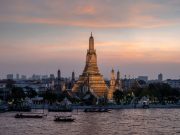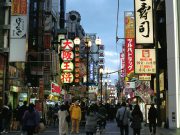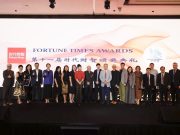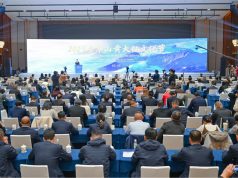(Singapore, 23.09.2025)Outdoor apparel and equipment brand Arc’teryx (始祖鸟), widely regarded as a top-tier go-to for mountaineers, hikers, and climbers, issued a public apology in China on Sunday for having staged a large-scale pyrotechnic display on the Tibetan Plateau two days earlier. According to Chinese media, the brand faced widespread criticisms for inflicting harm to the region’s pristine environment, with many accusing it of betraying its own image as a staunch champion of nature.
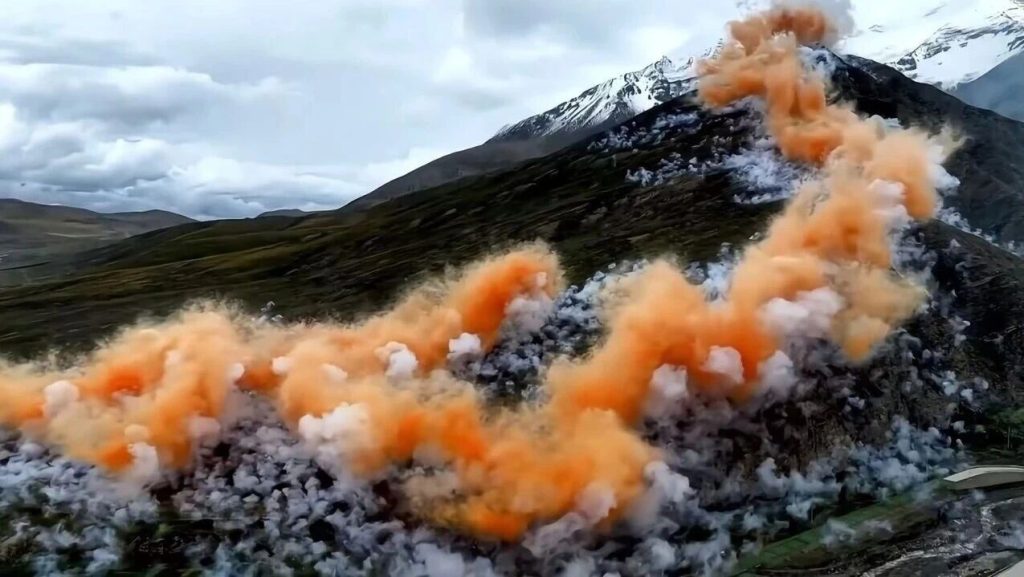
Founded in Canada, Arc’teryx was acquired along with its parent company Amer Sports (亚玛芬体育) in 2019 by the Chinese sports brand Anta (安踏). Last year Amer Sports went public in the US. In the first half of this year, the company achieved revenue of US$2.709 billion (S$3.45 billion), a year-on-year increase of 23.46%.
Last Friday (19 Sep), Arc’teryx teamed up with Cai Guoqiang (蔡国强), who is renowned for designing the aerial fireworks of the 2008 Beijing Olympics, in putting up a promotional pyrotechnic show titled “Ascending Dragon” in Gyantse county of Shigatse (日喀则), the second largest city in Tibet. The show began at an altitude of roughly 4,600 meters and ended at about 5,500 meters.
The fireworks showcased at least five colours, which some linked to the traditional Tibetan palette symbolizing the five elements: white for water, red for fire, blue for sky, green for earth, and yellow for wind. Presented in three distinct sequences, the display was designed to release fireworks in succession, evoking a dragon ascending along a mountain ridge toward a snow-capped Himalayan peak. The entire display was intended to represent vitality and good fortune in Chinese culture.
Despite measures to reduce environmental impact—such as using biodegradable materials, adjusting the placement of fireworks, and avoiding disturbance to wildlife habitats —the show had drawn brickbats and prompted a formal investigation by local authorities.
According to environmentalists, the fireworks themselves have generated air pollution and noise, and these might have disrupted the plateau’s ecosystem and wildlife.
China’s state-run People’s Daily remarked that “apologies are not enough after the fireworks have cleared.” Xinhua News Agency, another state media, said the apologies were a positive step but a full investigation is nevertheless necessary “to find out whether environmental assessment was properly conducted beforehand and to identify any shortfalls in procedural or ethical conduct.”
According to Chinese economist Pan Helin, Arc’teryx’s “act of damaging the environment while claiming to protect it” has raised sceptical questions about the intent of the show. Pan noted that brands may intentionally “fan a controversy” to boost marketing profile but attempts to maintain positive publicity could quickly falter.
Shen Meng, executive director of Chanson Capital, noted in an interview that the approval process for the show is now the focus of public scrutiny. He pointed out that limited knowledge and expertise among the locals might have affected the process. As a result, they have missed out on the show’s potential long-term impacts on ecology.
“What might have been meant to be a bold artistic expression is now perceived as an act of arrogance — a declaration of humanity’s dominance over nature,” commented a report in the 36 Kr, a media platform focusing on technology and entrepreneurship.
“For a brand supposed to be rooted in reverence for the mountains and wilderness, the symbolism of a fiery dragon could not have been more misguided,” it opined.
“For Arc’teryx to comprehend the ferocity of the public backlash, it must remember its main customers are professional climbers, explorers, and outdoor enthusiasts who hold environmental stewardship as a core value,” the report added.
Drawing on the widely recognized ‘Leave No Trace’ principle, which originated in the US during the 1960s, the report emphasized its fundamental tenet: do not alter nature by your presence. It cited the model case of Patagonia, another outdoor brand which built its entire identity on this principle. Patagonia’s founder even donated his US$3 billion (S$4.1 billion) company to environmental causes.
In this context, the report slammed Arc’teryx, arguing that staging a pyrotechnic display in one of the most fragile ecosystems in the world seemed to betray the very values it claims to uphold.
In branding, “core supporters” go beyond loyal customers — they form the cultural backbone of a brand and act as its most influential advocates, some Chinese netizens pointed out. “They promote the brand out of genuine passion, not merely with their purchasing power,” they asserted.
According to 36Kr, Arc’teryx’s recent marketing strategy appears to shift focus away from its core supporters, targeting instead a wider audience, particularly professionals drawn to the brand’s prestige and lifestyle appeal rather than its outdoor performance heritage.
“When a brand trades its authenticity for mass-market appeal, it risks becoming just another premium lifestyle label — one that everyone can buy but no one respects,” the report lamented.
Arc’teryx’s second-quarter same-store sales grew 15%, down sharply from 80% two years ago, unlike its parent company Amer. This slowdown may explain the temptation to use dramatic, attention-grabbing tactics.
“To their credit, Arc’teryx and Cai Guoqiang have both publicly apologized. Yet, the true test lies ahead: it requires them to approach the mountains not as a conqueror, but as a caretaker,” the 36 Kr report advised.




